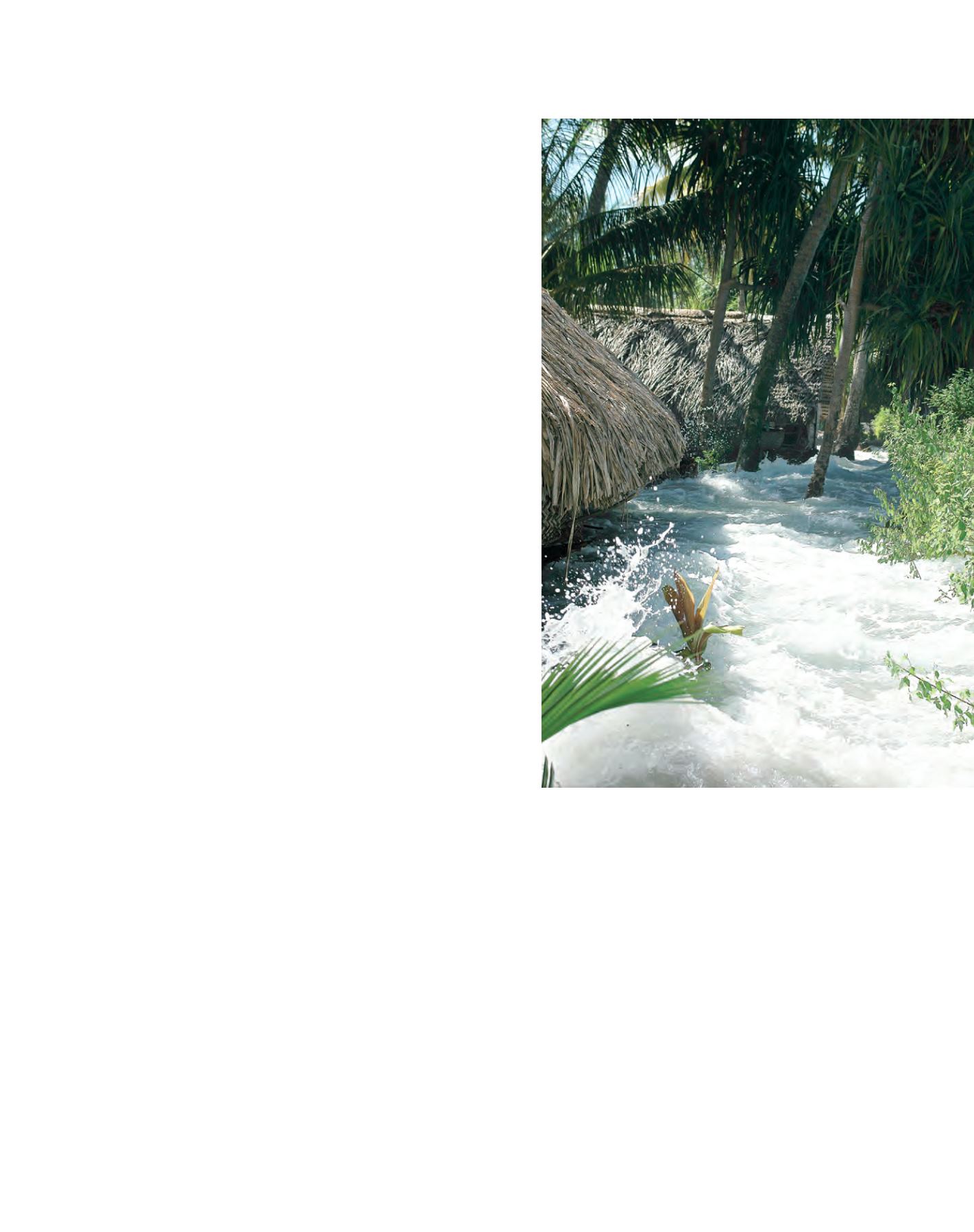

[
] 51
T
he
I
mpacts
and
I
mplications
of
C
limate
C
hange
and
V
ariability
Outmigration in the Pacific, therefore, is not a new
phenomenon related to climate change. Factors such
as the lack of development coupled with population
increase, pressure on resources and consequent degra-
dation of soil, land and vegetation has all contributed
to immigration. Alongside spontaneous internal and
international migration, government schemes have also
been working to resettle populations within countries.
Both the Maldive and Papua New Guinean governments
practise population resettlement, which has recently
been identified as ‘climate change migration’.
7
The Republic of Maldives government allocates
populated islands to tourist resorts, transferring respon-
sibility for infrastructure and service provision to
tourism companies. At the same time, action has been
taken to separate resorts from the indigenous popula-
tion with the aim of protecting culture. More recently,
What physical processes are taking place in low elevation
small island communities?
Low-lying reef islands are dynamic landforms that are especially
sensitive to the changes in wind, waves and water level that occur
normally from season to season and within the natural variability
of local climate conditions.
4
They are also sensitive to changes in
shoreline processes and sediment movement to and around their
shores. This includes islands associated with both traditional and
engineered shoreline protection or reclamation activities. The recent
experience of many island communities is one of marked shoreline
change, coastal erosion and loss of island area into the sea. The
impacts of these changes are often compounded by two factors.
First, is the breach of a higher natural berm that typically encircles
the lower central parts of many reef islands, allowing the sea to
flood into the island core during higher tides and storms. Second,
population growth on many islands means that settlements may
now occupy island areas long known to be vulnerable to periodic
flooding.
5
Whether recent erosion and inundation is driven by climate
change impacts is a moot point, although it is known that many
island communities fear that recent changes are the beginning of a
trajectory of decline and that submergence is, ultimately, inevitable.
Wave inundation associated with extreme high tides, elevated sea
levels associated with a strong La Niña, and two large storms in the
region affected broad areas of the western Pacific in December 2008,
eroding shorelines, washing away houses and infrastructure, flood-
ing food gardens and contaminating water supplies. This event can
be explained by the unlucky coincidence of three factors that may
be unrelated to climate change – although it may be argued that
they have become more intense and frequent as a consequence of it.
Indeed, washover events have been experienced before – one recent
occurrence has been associated with the Chilean tsunami. However,
this event appears to have been viewed differently by many island
communities – a prelude of what is to come – and clearly some-
thing that they do not want to face again.
Migration and resettlement schemes
Pacific and Indian Ocean island countries such as the Maldives,
Tuvalu and Kiribati are especially vulnerable to sea-level rise and
have already experienced its impacts. The media has, in the past,
made reference to climate change refugees and the disappearance
of these three nations as their limited land area is engulfed by
the sea. Equally vulnerable are small atoll communities that are
part of larger island states such as Papua New Guinea, Solomon
Islands and Fiji. While small nations like Tuvalu contemplate
not only the loss of their homeland, but their independence and
sovereignty if they are forced to relocate, the consequences are no
less dire for remote communities such as the Carteret, Mortlock
and Tasman islands in Papua New Guinea, whose populations
have maintained strong cultural autonomy in the absence of
much outside support.
In the face of increased erosion and inundation, individuals,
households and communities face the prospect of emigrating from
their homelands. Although, Pacific islanders have been migrating
to larger centres for decades to seek opportunities and services
that they are unable to access at home.
6
Many island governments
including Tuvalu have encouraged migration, as absentees remit
earnings to support their family at home and provide a cultural and
socioeconomic base for subsequent migrants.
Small atoll communities are particularly vulnerable to flooding
Image: Jeffrey Holdaway
















